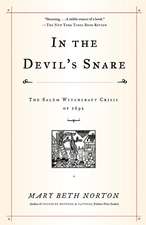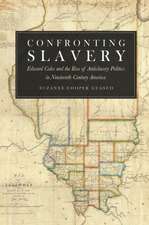Heartland Utopias
Autor Robert P. Suttonen Limba Engleză Hardback – 9 iun 2009
Sutton offers a regional approach to the study of utopian movements, focusing specifically on the “heartland,” which he defines to include the Old Northwest Territory, the Dakotas, and Missouri. In the number of utopian settlements, the heartland region is surpassed only by New England. Heartland Utopias provides a scholarly overview of 19th century utopian communities in the heartland from the first Shaker village near Dayton, Ohio, built in 1807, to the 1903 incorporation and ensuing stormy history of The House of David in Benton Harbor, Michigan.
During these years, charismatic individuals built three different kinds of utopias: perfectionist, whose members thought they could achieve impec-cancy almost immediately by living communally; cooperative, whose members believed that communalism would improve the moral and economic condition of its members and at the same time be the alternative to exploitative capitalism; and social and communist, whose members believed that democracy and equality could never be achieved without living in an “association,” as with the socialists, or in a “community of good,” as with the Icarians.
While these communities have individually been the topics of past studies, Sutton’s work is the first comprehensive examination of all of the most important heartland communities. Major emphasis, with separate chapters, is given to the following major utopian settlements: the Shakers, the New Harmony, a number of separatist communities, the Fourierist phalanxes, the Icarians, the Hutterites, and the Chicago-area utopian societies. Many of the communities that Sutton discusses still exist today. American historians, regional historians, and students of utopian and communal studies will be interested in this well-organized and readable survey.
During these years, charismatic individuals built three different kinds of utopias: perfectionist, whose members thought they could achieve impec-cancy almost immediately by living communally; cooperative, whose members believed that communalism would improve the moral and economic condition of its members and at the same time be the alternative to exploitative capitalism; and social and communist, whose members believed that democracy and equality could never be achieved without living in an “association,” as with the socialists, or in a “community of good,” as with the Icarians.
While these communities have individually been the topics of past studies, Sutton’s work is the first comprehensive examination of all of the most important heartland communities. Major emphasis, with separate chapters, is given to the following major utopian settlements: the Shakers, the New Harmony, a number of separatist communities, the Fourierist phalanxes, the Icarians, the Hutterites, and the Chicago-area utopian societies. Many of the communities that Sutton discusses still exist today. American historians, regional historians, and students of utopian and communal studies will be interested in this well-organized and readable survey.
Preț: 286.43 lei
Nou
Puncte Express: 430
Preț estimativ în valută:
54.81€ • 59.52$ • 46.04£
54.81€ • 59.52$ • 46.04£
Carte tipărită la comandă
Livrare economică 22 aprilie-06 mai
Preluare comenzi: 021 569.72.76
Specificații
ISBN-13: 9780875804019
ISBN-10: 0875804012
Pagini: 229
Dimensiuni: 152 x 229 x 23 mm
Greutate: 0.5 kg
Ediția:1
Editura: Northern Illinois University Press
Colecția Northern Illinois University Press
ISBN-10: 0875804012
Pagini: 229
Dimensiuni: 152 x 229 x 23 mm
Greutate: 0.5 kg
Ediția:1
Editura: Northern Illinois University Press
Colecția Northern Illinois University Press
Recenzii
“Finally the American Midwest has received long-overdue recognition as the prime center of American utopian communalism. Robert Sutton has greatly expanded our understanding of the communal spirit and of the geography of communalism with this work that is the fruit of a lifetime of scholarship.”—Timothy Miller, University of Kansas
Notă biografică
Robert P. Sutton (1940–2009), retired Professor of History and former director of the Center for Icarian Studies at Western Illinois University, was the author of thirteen books, half of them on communal history, including Communal Utopias and the American Experience in two volume
Cuprins
Table of Contents
Introduction
1. Shaker Villages
2. New Harmony
3. Other Separatist Communities
4. Fourierist Phalanxes
5. Icaria
6. Hutterite Bruderhofs
7. Chicago Area Utopias
8. Contemporary Heartland Utopias
Conclusion
Notes
Selected Bibliography
Index
1. Shaker Villages
2. New Harmony
3. Other Separatist Communities
4. Fourierist Phalanxes
5. Icaria
6. Hutterite Bruderhofs
7. Chicago Area Utopias
8. Contemporary Heartland Utopias
Conclusion
Notes
Selected Bibliography
Index
Descriere
Sutton offers a regional approach to the study of utopian movements, focusing specifically on the “heartland,” which he defines to include the Old Northwest Territory, the Dakotas, and Missouri. In the number of utopian settlements, the heartland region is surpassed only by New England. Heartland Utopias provides a scholarly overview of 19th century utopian communities in the heartland from the first Shaker village near Dayton, Ohio, built in 1807, to the 1903 incorporation and ensuing stormy history of The House of David in Benton Harbor, Michigan.
During these years, charismatic individuals built three different kinds of utopias: perfectionist, whose members thought they could achieve impec-cancy almost immediately by living communally; cooperative, whose members believed that communalism would improve the moral and economic condition of its members and at the same time be the alternative to exploitative capitalism; and social and communist, whose members believed that democracy and equality could never be achieved without living in an “association,” as with the socialists, or in a “community of good,” as with the Icarians.
While these communities have individually been the topics of past studies, Sutton’s work is the first comprehensive examination of all of the most important heartland communities. Major emphasis, with separate chapters, is given to the following major utopian settlements: the Shakers, the New Harmony, a number of separatist communities, the Fourierist phalanxes, the Icarians, the Hutterites, and the Chicago-area utopian societies. Many of the communities that Sutton discusses still exist today. American historians, regional historians, and students of utopian and communal studies will be interested in this well-organized and readable survey.
During these years, charismatic individuals built three different kinds of utopias: perfectionist, whose members thought they could achieve impec-cancy almost immediately by living communally; cooperative, whose members believed that communalism would improve the moral and economic condition of its members and at the same time be the alternative to exploitative capitalism; and social and communist, whose members believed that democracy and equality could never be achieved without living in an “association,” as with the socialists, or in a “community of good,” as with the Icarians.
While these communities have individually been the topics of past studies, Sutton’s work is the first comprehensive examination of all of the most important heartland communities. Major emphasis, with separate chapters, is given to the following major utopian settlements: the Shakers, the New Harmony, a number of separatist communities, the Fourierist phalanxes, the Icarians, the Hutterites, and the Chicago-area utopian societies. Many of the communities that Sutton discusses still exist today. American historians, regional historians, and students of utopian and communal studies will be interested in this well-organized and readable survey.















